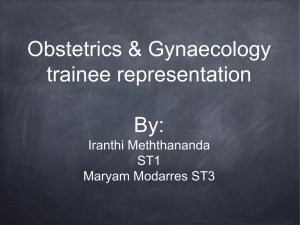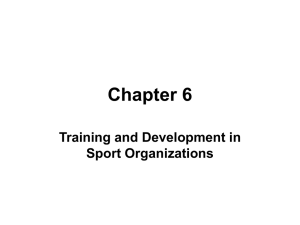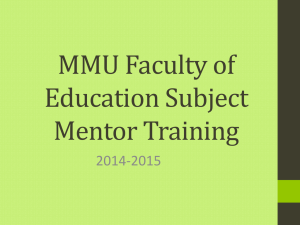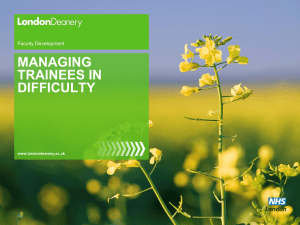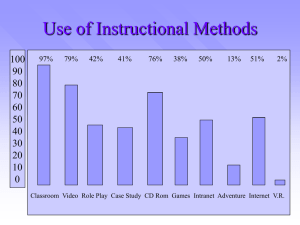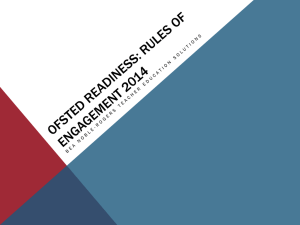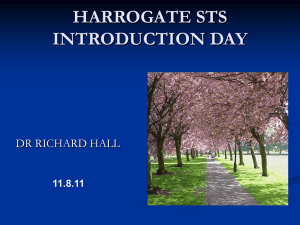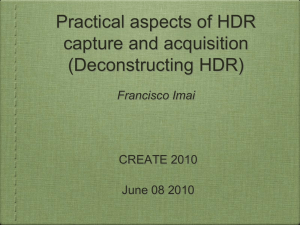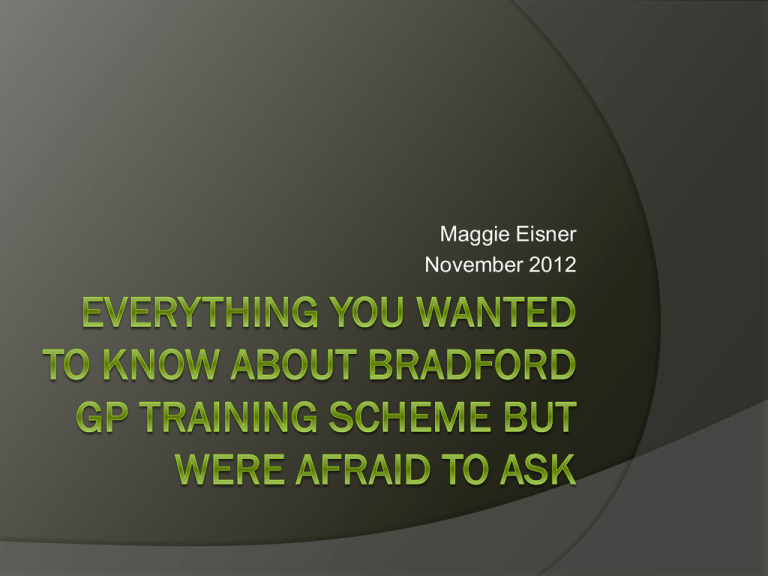
Maggie Eisner
November 2012
Introduction
Organising group asked me to talk about
‘How the VTS works’
This was a suggestion on someone’s
Peer Appraisal feedback
I asked everyone to send me a question
3 people replied, one of them with 2
questions
The slides re their questions have lilac
titles
Recruitment process
National system via GP recruitment
website
Stage 2: 2 machine marked papers:
knowledge and Situational Judgement
test (Professional Dilemmas)
Stage 3: 3 simulations (patient, relative,
colleague) + written paper (prioritisation)
Individual component marks fed into
computer -> Trainable or Not Trainable
Allocation of posts
Trainees put rotations in order of
preference on application forms
Allocated according to their recruitment
scores – but bottom 10% are given their
higher preferences, in order not to make
their chances worse
In Bradford, rotations of successful
candidates adjusted according to trainee
preference
References not scrutinised before trainee
accepted at recruitment – we look at them
when trainees are allocated to the scheme
Today’s Bradford trainees
85 on scheme in August 2012
59 female (approx 70%)
19 IMGs (22%)
Almost 50% Muslim
Many less than full time
Several on maternity leave
Several with significant health problems
Several with complex family
responsibilities
What should trainees cover in each of the 3
years (so I can tailor my tutorials
appropriately)?
Too much variation between trainees to
give an answer
Broad 1st GP post (ST1 and 2) aims are on
website
ST2s should possibly be thinking about
AKT
ST3s will be working towards CSA
Consider using CSA ‘generic indicators for
targeted assessment domains’, as well as
COT criteria, when looking at videos
Pathway to becoming a trainer
Submit consultation video to COT
standard
Pass PG cert in Primary Care Education
(4 modules)
Learn about MRCGP (no ‘n’)
Sessions with trainer-mentor – anyone
interested in being one?
Interview at Deanery
Ensuring trainers get feedback
from trainees
Free-text form which trainees fill in at 1st
HDR of each 6 months, about the last 6
months – we send to trainers and to
consultants
Survey Monkey – nearly all trainers
have agreed to share results; you’ll
soon have access to them all
Even then we probably won’t get 100%
response rate
Our educational programmes
Half day release – mostly about
attitudes and competencies
Modular courses – mostly related to
assessments
Wednesday tutorials – mostly related to
knowledge/curriculum
IMG days
Half Day Release –
how has it changed recently?
Some sessions still in 4 mixed-year groups
3 tier sessions (5 in 6 months):
ST3s: CSA practice, then ‘preparation for life after GP
training’
ST1/2s in 1st GP post: consultation models & consultation
skills practice
ST1/2s in hosp : trainees present key topics from their
specialty
Mix of discussion sessions, trainee presentations
(4 competencies and other topics), topic based
sessions, sessions covering broad aspects of GP
(ethics, person-centred care), Arts based sessions
Also mock CSA sessions and consultation skills
sessions using simulators
Modular courses
Developed partly because hospital trainees
found it hard to get to HDR
Full days, most at Utopia near Skipton
Programme:
Induction – on starting scheme
2 Intro to WPBA days – on starting scheme
2 AKT preparation days – ST2
Safeguarding – any ST year
ARCP prep – any year (could be done every
year)
Introduction to CSA – ST1 or 2
Attendance at educational
sessions
We expect
Equivalent of 70% HDR attendance in hosp
posts
80% HDR attendance in GP posts
New electronic system for recording HDR
attendance and feedback
Hospital trainees can make up 16 sessions
of educational attendance from a mixture of
HDR sessions and modular courses
Spelling this out for hospital consultants
and rota co-ordinators has helped
attendance
IMG courses
2 days in Spring every year
For IMGs in all years
Aims
General support, (recognising everything’s harder for
them)
Increase chances of their passing CSA?
Content
Address and discuss their own concerns
Discussion of English language/culture issues
Presentation on CSA by successful IMG ex trainee
Consultation skills practice (mostly sex and death)
Peer support
TPDs’ areas of responsibility
Each of us – TPD advisor to group of trainees
Each of us – TPD liaison with one or more hospital
specialties
Maggie – HDR (with Lucy), IMG days, trainer
support and development, Practice Managers,
lead for admin liaison
Nick – trainee allocations, finance (incl Study
Leave), modular courses (with Hasna), OOH
Ram – website, Wednesday tutorials, educational
supervision, ARCP
Lucy – HDR (with Maggie)
Hasna – Modular courses (with Nick), IMG days
What about the Deanery?
We are in W Yorks Locality, 1 of 3
localities in Y&H Deanery
GP and hospital education less separate
than before
Increasing financial constraints
Fewer support staff, more overworked
Fewer clinical staff
We have to do more locally
The future (national)– 4 year training?
RCGP proposals accepted in principle by some bodies,
but more will have to accept it before it goes ahead
No additional money
At least 24 months in primary care
AKT and CSA by end of 3rd year
4th year may concentrate on
leadership/community/society aspects of GP rather than
just the consulting room and the practice
Some ‘innovative training placements’ w relevant
experience in GP and ‘integrated community placements’
(e g drugs and alc)
Quality Improvement Project in Year 4, and CCT at end of
year 4
No implementation date so far
The future (local)
Sofya’s maternity leave
Dec 2012 – Dec 2013
Challenging negotiations with BHT Education
dept about cover
Leanne Priestley (from BHT Library) covering
most of Sofya’s work
Nick’s sabbatical
Jan, Feb and Mar 2012
Hasna and Lucy doing extra sessions to cover
Possible slight rejig of responsibilities within
team (e g Ram setting up online OOH, Lucy
main lead for HDR, Maggie and Hasna sharing
other duties of Nick’s)
What I’ve covered
Recruitment process
Allocation of trainees
Trainee numbers and characteristics
Pathway to becoming a trainer
Feedback from trainees
Our educational programmes
Roles and responsibilities of TPDs
What the Deanery does
4 year training
Local changes in team
Now you’ve heard all this
Please let us know if you have any
Thoughts
Suggestions
Ideas


